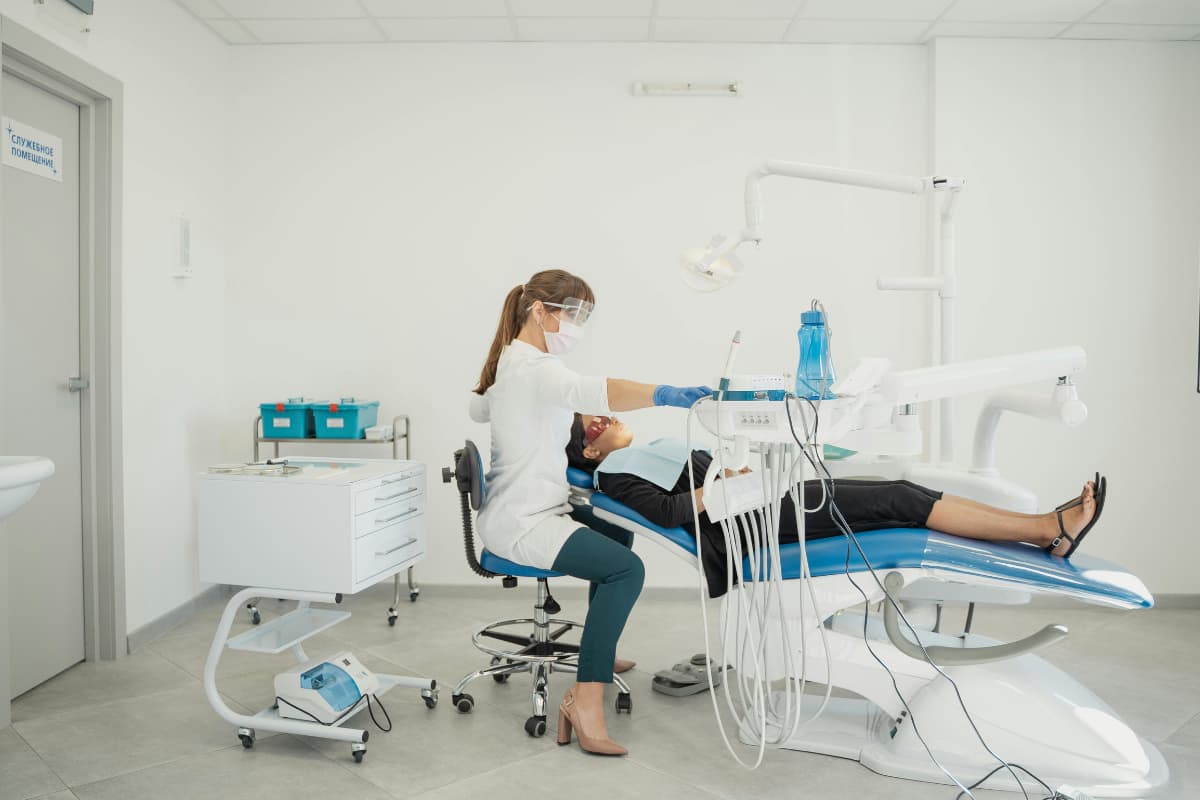What is patient admission in the doctor's office?
The admission of a patient serves to clarify preparatory measures and to obtain personal data before actual medical treatment. What complaints do patients have? Are medications already being taken? And are all required declarations of consent available? In addition, cost issues such as treatment contracts, possible co-payments or optional services, as well as questions relevant to data protection law can be clarified at reception.
Patient admission to a doctor's office is often the first personal experience that patients can expect in your practice. All further interaction is characterized by this first point of contact. It prepares the anamnesis and lays the foundation for successful doctor-patient communication. It is therefore all the more important to pay particular attention to this starting point when admitting a patient.
What data is collected during patient admission?
When enrolling a patient, you should generally collect the following information:
- Medical history including name, address, contact information, medications, allergies and medical history
- insurance status
- Payment information
- Treatment contract for private patients
The process flow of a patient admission

The process of patient admission usually begins with an initial admission form or an anamnesis sheet for existing patients. It collects all data necessary for treatment as well as inquiries relevant to data protection law. Since data collection in many medical practices is still carried out in the traditional way using a clipboard and pen, you or your practice team must then transfer the information to your patients' digital medical records via your practice management system. This process in particular is laborious and time-consuming in everyday practice: The forms are not completely filled out, signatures are missing, the writing is illegible and transcription errors are inevitable.
The initial admission form and all other documents created during the patient admission process are then archived using a paper filing system. These documents are usually also digitized using a scanner — and the paper is never used again.
In the last step, doctors discuss the information on the medical history sheet as well as any allergies, illnesses and medications with their patients in person. This is where the problem of paper questionnaires is revealed from a patient's perspective: If you, as a doctor, have no time to review them before the patient interview, the questions are often reviewed repeatedly. As a result, your patients get the impression that they have answered them unnecessarily.
What is a digital patient recording?
A digital patient recording digitizes the patient admission process flow. Patients can fill out and sign all important documents from their smartphones — even before visiting the practice from the comfort of their own home!
Tip: Would you like to make the patient admission process in your medical practice easier and faster? Nelly helps you complete this process in a time-saving manner and also reduces your paper consumption by up to 80 percent.
Adopt patients correctly: A checklist
Patient admission is an important part of your practice and many details are even legally required. So what does it include? Our patient admission checklist for dentists and general practitioners will tell you.
1. The anamnesis
In general, you should always enter your patients' master data. Nowadays, this includes not only the name, address and contact information, but also information on medications, allergies and medical history. General practitioners can interrogate the medical history orally and document it during the consultation. Dentists, on the other hand, are required to provide a medical history sheet.
Tip: The anamnesis is mandatory for the dentist — but not for patients. However, if you consider the information essential for treatment, you can refuse it.
For all medically relevant information, it is worthwhile to visit the websites of the associations or chambers of the respective professional groups. Free templates for medical history sheets are usually provided here.
In the best case, your patients also carry a medication plan and an allergy pass. Allergists, general practitioners and gynecologists should also remind their patients of the vaccination certificate before visiting the practice. If you run a dental practice, you can also remember the bonus booklet.
Tip: According to the Patient Rights Act You should check the medical history data regularly and always keep it up to date. This is because previous information can be outdated and new, important information can easily be overlooked.
2. Privacy statement
Managing and using medical data is very precisely regulated in Germany. A good overview of the topics “collection of personal data”,”Data protection for practice” and”Cooperation with service providers” offers the KBV on its website. It not only explains exactly what needs to be considered, but it also provides sample copies that work across disciplines.
3. Insured status
Querying the status of an insured person is standard in the process of patient admission. In the area of statutory health insurance, doctors are subject to the regulation of SECTION 294 SGB V even required to read the health insurance card.

4. Assignment of accounts
If your practice also invoices or forwards them to a billing service for verification, you are probably familiar with these slips of paper. In any case, you will receive them from your invoicing agent and billing office.
Tip: Nelly offers you an alternative to invoicing that not only saves every practice time but also money and improves the experience of visiting the practice for your patients.
5. Third party providers
If you work with companies such as Doctolib, they sometimes require patients' consent to contact you or, if necessary, use certain data. If in doubt, it is worthwhile to ask the respective company directly.
6. Documentation requirement
Loud Section 630 f BGB of the Patient Rights Act Physicians must keep the patient records and all documents collected in this context for at least ten years. Unfortunately, this documentation requirement costs a lot of time in everyday life. With a digital solution like Nelly, you can save yourself this effort.
Digital patient recording with Nelly
Doctors have an average of 8 minutes to talk to their patients. Because of this fact, it is often a challenge for you and your practice team to collect all important information for successful treatment. In addition, time-consuming tasks such as scanning and archiving the required documents delay everyday practice.
There is Nelly for these problems: Nelly digitizes the entire process of patient admission to your doctor's practice and manages the associated paperwork directly online. This makes printed medical history sheets, paper documentation or even chasing signatures a thing of the past.
Check-in conveniently from home thanks to Nelly

With Nelly, patients can be admitted to the doctor's office even before the actual patient visit. With one click, you simply send your patients a link to the digital medical history sheet. All required forms can be completed directly from your patients' smartphones, conveniently from home or in the doctor's office. A subsequent GDPR-compliant digital signature completes the process.
The advantage: As a doctor, you receive a detailed preliminary anamnesis with all necessary details about your patients even before the patient consultation. This not only saves you and your staff time, resources and costs, but also protects the environment: With Nelly, you use 80 percent less paper, save up to 90 minutes a day and reduce your payment fees by up to 30 percent. Sounds good? Then digitize your medical practice with Nelly now! We advise you non-binding and free to your individual case!
The personal names used in this article always refer equally to all persons. Dual naming and alternate names are omitted in order to improve readability.












